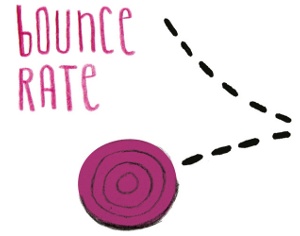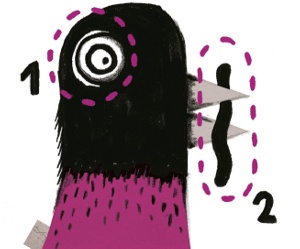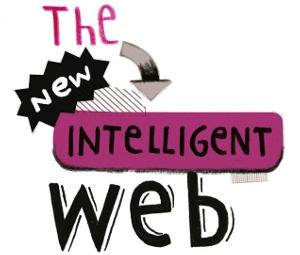Web glossary
We're sure this whole internet thing's just a fad, but in the meantime here's our collection of vital terminology for design on the web
Accessibility
The degree to which a web page can be used by all people, including those with some form of disability.
AJAX
Not the hero of ancient Greece you were doubtless thinking of. No, Asynchronous JavaScript and XML is a clever way of side-stepping the static nature of HTML, enabling the delivery of smooth, interactive web applications.
Apache
The open-source Apache web server is one of the pillars of the internet. In the vast majority of cases, browsers sending HTTP requests receive their replies from Apache.
Back-end
This is the database, server configuration and application logic that sits behind a website, enabling it to present information in a dynamic way.

Bounce rate
The percentage of visitors to a website who view only one page, then 'bounce'. Not good.
Box model
No, fashion and packaging haven't merged. Taken from CSS, the box model describes the system of margins, padding and borders that surround elements within the document tree, and determines the sum total of their layout properties.
Cache/Cached files
Caching is a browser or server feature that saves regularly used information on a hard disk, rather than re-requesting it from the server every time a page is loaded.
Get the Creative Bloq Newsletter
Daily design news, reviews, how-tos and more, as picked by the editors.
Cascading Style Sheet
It's good form to separate the structure of a website's data from any description of how the information is meant to be displayed. The latter details are kept in CSS files. The cascade refers to the rules determining the outcome of CSS conflicts.
Client-side/server-side
This refers to the communication between a web client (browser) and a server, with a client asking a server for a web page and the server providing one. Designers must decide where calculations are performed by their site: server or client. Server is more flexible; client is faster - though HTML5 is levelling the playing field.
CMS
On the web, a content management system is a pre-built framework, usually of modular nature, within which websites can be maintained in a collaborative environment. Drupal and WordPress are two of the most popular; others include Joomla and Plone.
DOM
The Document Object Model sounds a lot worse than it is: it's really just a convenient system for naming and addressing the elements that make up a web page (its tags) so that they can be manipulated by the likes of JavaScript.
Elastic layout
A web page with an elastic layout will contract and expand with your browser window and font preferences. This flexibility is achieved with percentages or ems, rather than fixed values.
Element
Like the substances that make up the periodic table, the elements of a web page are its fundamental building blocks. They can be html, xml or xhtml, but are always structured as a tree of data.
Em
An em is a relative measure used in web typography. For example, if you use 2em as your type size then you're setting the font on that element and its children to twice the default size.
Favicons
'Favourites icons' are tiny logos that appear at the far left of a browser's address bar. They can be static or animated, depending on your browser, and give websites that use them a little extra personality.
Fold
Above the fold is the portion of a web page that's immediately viewable when you load it up. You'll need to scroll down in order to read below the fold.
Graceful degradation
Though it might sound like a niche service that would be popular among hyper-tense civil servants, this is really the practice of ensuring that when a web page breaks it does so with minimal fuss.
Hexadecimal
Hexadecimal describes a base-16 number system, and is used for many things. One function is to refer to the RGB colour space used online: #ffffff refers to white, and #000000 to black.
HTML
Hyper Text Markup Language really makes the web what it is today. The ability to link between data is central to the concept of a World Wide Web, and HTML is the language used to facilitate this process.
HTTP
Hyper Text Transfer Protocol. This underlies the communication processes on which the web relies. It uses a request-response model: the client requests HTML from the server, which responds.
iFrame
The iFrame is an HTML element that enables an entire page of HTML to be nested and displayed within the confines of another page. This could end up leading to a kind of Russian doll scenario.

Image map
A list of co-ordinates relating to a specific image, used to create hyperlinks within the regions they describe.
Markup
HTML, XML, XHTML and SGML are all markup languages. They apply a system of tags to text and other objects, making them readable by a computer.
Metadata
Metadata is, essentially, data about data. A common example is the use of a <meta> tag to include a list of keywords within a web page, giving search engines some idea about the nature of the site's content.
PNG
The Portable Network Graphic is an image format that was designed specifically for transferring image data on the web. It can include transparency information but doesn't support CMYK.
Open source
Most significant for their contribution to the world of software, open source projects publish their code base and allow anyone to copy, modify and redistribute it. The applications develop as a result of this openly collaborative approach.
Quirks mode
Browser manufacturers haven't done a perfect job of implementing web standards, particularly when it comes to CSS. As a result, it's sometimes necessary for browsers to look out for web pages written to accommodate these 'quirks'. There's even a mode for it.
RSS
Really Simple Syndication is the foundation of the mash-up concept. A flavour of XML, it provides a machine-readable standard for web content so that it can be easily and meaningfully redistributed online.
Selector
Within CSS, a selector is any part of the HTML you're attempting to pull together in a bid to apply a visual rule. The tag name, its ID or class are all acceptable.

Semantic web
A group of technologies that, fully deployed, will enable computers to read web pages and also to extract meaning from them.
SEO
Search engine optimisation increases a site's ranking. This may mean customising content or keywords, or getting people to link to or write about a site.
SOAP
Rub-a-dub-dub? Not quite. The Simple Object Access Protocol provides a standard by which XML data can be transferred between platforms using HTTP.
Template
Templates provide websites with a simple structural guide for their pages, ensuring consistency while allowing users some flexibility in terms of layout.
Theme
Gives a site its look. Often the result of custom CSS pages that can be applied to the same template to produce different results, almost on a user-by-user basis.
URL/URI
The Uniform Resource Locator/Identifier in the address bar gives the unique location of a particular resource on a network.

Thank you for reading 5 articles this month* Join now for unlimited access
Enjoy your first month for just £1 / $1 / €1
*Read 5 free articles per month without a subscription

Join now for unlimited access
Try first month for just £1 / $1 / €1
The Creative Bloq team is made up of a group of design fans, and has changed and evolved since Creative Bloq began back in 2012. The current website team consists of eight full-time members of staff: Editor Georgia Coggan, Deputy Editor Rosie Hilder, Ecommerce Editor Beren Neale, Senior News Editor Daniel Piper, Editor, Digital Art and 3D Ian Dean, Tech Reviews Editor Erlingur Einarsson, Ecommerce Writer Beth Nicholls and Staff Writer Natalie Fear, as well as a roster of freelancers from around the world. The ImagineFX magazine team also pitch in, ensuring that content from leading digital art publication ImagineFX is represented on Creative Bloq.
